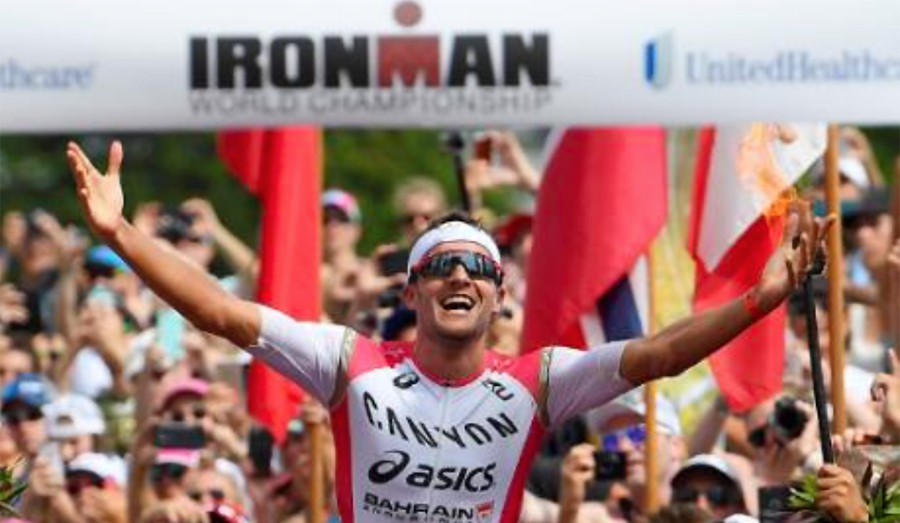Ironman has announced its Safe Return To Racing event guidelines, “a series of comprehensive operating principles prepared in accordance with industry standards for open-air mass participation sporting events.”
Based on standards from the World Health Organization (WHO) and developed with guidance from the Ironman Global Medical Advisory Board (IGMAB), the best practices are designed to allow for Ironman and Ironman 70.3 triathlons to be organized in… ‘a manner consistent with each of Ironman’s local community objectives and within the expectations set by public health entities around the world as they relate to the impacts of COVID-19.’
Ironman, through its Ironman Smart Program under which these guidelines fall, added that it is committed to conducting races in a way that reduces the risk for athletes, volunteers, and host communities.
Ironman has benchmarked races around the world to identify and measure concentrations of physical touchpoints, proximal interactions and density focusing on every aspect of the race experience from when athletes arrive at an event until they leave the venue post-race.
As a result, the Safe Return To Racing operating principles are organized around four areas:
- Enhanced Hygiene — hand sanitizer, handwashing stations, and disinfectant wipes will be readily available around our venues. The cleaning of common venue areas will be enhanced. Staff and volunteers will be provided with face coverings and gloves to be used while working in all athlete-facing areas. Athletes will be provided with face coverings at packet pickup and are expected to wear a face-covering around event venues.
- Screening and Education — appropriate personal health, personal hygiene and safe support education and training will be provided for staff and volunteers in necessary functional areas. This includes the future expansion of the Ironman Smart Program to provide Volunteer Smart guidelines for volunteers. Athletes and volunteers will be required to fill out a pre-race health questionnaire. Additionally, in many venues, no-touch body temperature screening will be instituted. Per the World Health Organization guidelines, individuals with a body temperature of greater than 100.4º Fahrenheit or 38º Celsius will not be allowed to race, volunteer or work.
- Density Reduction — the organization will institute measures to increase space for athletes and supporting personnel in areas such as swim start, transition, and finish line. Modification or elimination of non-essential race services and functions, such as banquets may also occur.
- Touchpoint Minimization — the organization will reduce or remove touchpoints and points of interaction between staff, athletes, and volunteers without compromising event safety and security, through redesign and reconfiguration of event village areas as well as race course zones such as aid stations.
- Athlete Self-Reliance — through the Athlete Smart program, athletes will be empowered to determine their individual level of self-reliance to further minimize interaction and touchpoints with race officials and volunteers. Athletes will be encouraged to Race Smart by carrying nutrition and hydration while utilizing items such as hydration vests and events offered special needs stations. Athletes should review and embrace Athlete Smart Self Reliance Tips which can be found at Ironman.com/return-tips.
“Safety and community have always been the north stars of our organization,” said Andrew Messick, president and CEO of The Ironman Group. “And while the decision around when to host races will ultimately depend on local communities and public health authorities, we have been working with experts and race stakeholders on how to conduct events in a post-COVID environment that allows for the economic, mental and physical benefits endurance events provide.
“We have created a plan for returning to racing and believe that these guidelines keep our athletes, volunteers, staff and communities safe.”
He continued, “Implementing these best practices across Ironman and Ironman 70.3 events, including our Athlete Self-Reliance recommendations, has the ability to eliminate up to 90% of total touchpoints and interactions for athletes in a typical race.
“These guidelines are designed to help our communities with the return to healthy and safe racing so they can once again secure the benefits of hosting our races. These guidelines are crafted in close consultation with the Ironman Global Medical Advisory Board, our communities, and others who are an integral part of the racing ecosystem,” said Messick.
Ironman has also developed a Return To Racing Athlete Pledge that emphasizes the renewed athlete and participant responsibility for competitive cooperation, providing space and time for everyone to participate safely. The pledge will remain a component of the Ironman Smart Program and serves to empower athletes to have their best race day possible by racing safely and considerately. Upon taking the pledge, athletes can download a digital badge in acknowledgment of their commitment and cooperation.
Ironman continues to monitor for pandemic updates from public health authorities such as the World Health Organization (WHO) and respective national organizations like the Centers for Disease Control and Prevention (CDC) and will continue to follow the guidance of local authorities, when determining the status of Ironman events and programs.
As COVID-19 continues to evolve, Ironman added that it is dedicated to adapting the Safe Return To Racing guidelines in line with the current environment. Additional COVID-19 resources and updates from Ironman are available at here.
Photo courtesy Ironman













